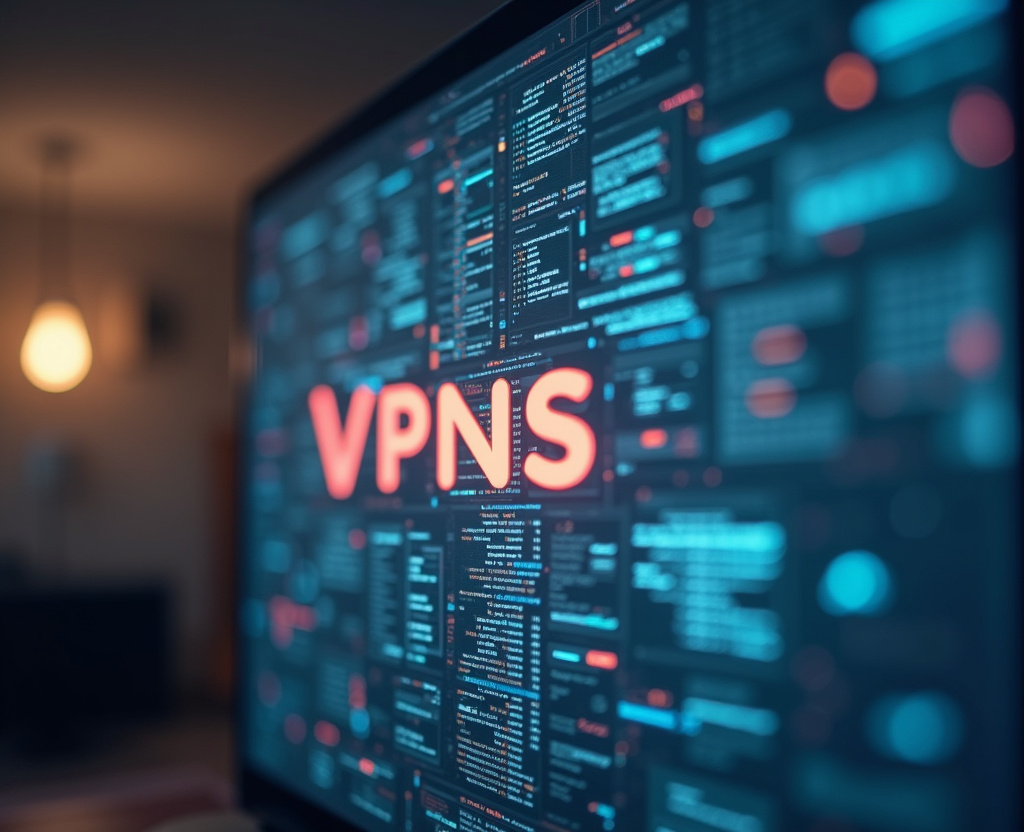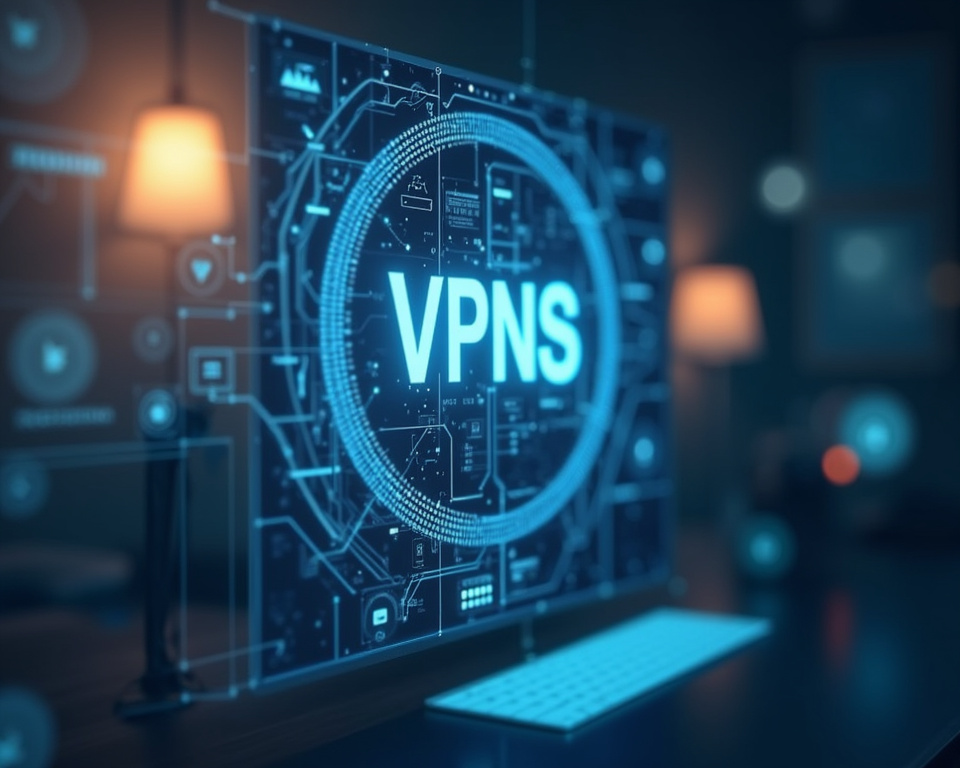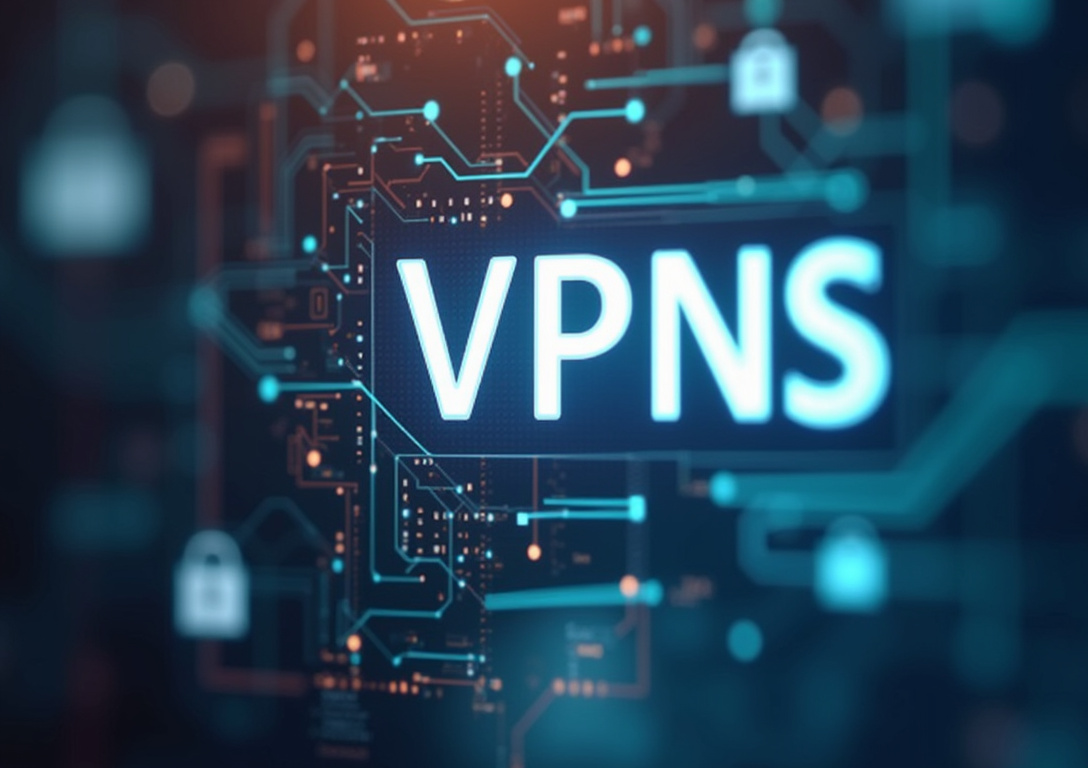VPNs for Home Enthusiasts: Enhancing Smart Device Security

Table of Contents
Understanding the Smart Home Security Landscape
In today's hyper-connected world, the concept of a "smart home" has transitioned from a futuristic fantasy to a tangible reality. Homes are increasingly populated with a diverse array of smart devices, ranging from intelligent thermostats and lighting systems to advanced security cameras and voice-activated assistants. These devices, collectively forming a connected home, offer unparalleled convenience and automation, streamlining daily tasks and enhancing overall quality of life.
However, this increased connectivity also introduces a significant challenge: the imperative to ensure robust device security. Each smart device represents a potential entry point for malicious actors seeking to compromise personal data, disrupt home networks, or even gain unauthorized access to physical spaces. The inherent vulnerabilities of many smart devices, coupled with the often-lax security practices of users, create a fertile ground for cyber threats.
Without adequate protection, a connected home can quickly transform from a haven of convenience into a vulnerable target. This is where the implementation of a smart home VPN becomes crucial. A VPN, or Virtual Private Network, provides a vital layer of defense, encrypting internet traffic and masking IP addresses, thereby shielding smart devices from external threats.
A smart home VPN essentially creates a secure tunnel through which all internet-bound traffic from connected devices is routed, rendering it unreadable to eavesdroppers and significantly mitigating the risk of data interception. Choosing the right VPN service is a critical decision, as not all VPNs are created equal. Factors such as server network size, encryption protocols, logging policies, and device compatibility must be carefully considered to ensure optimal protection for the entire connected home ecosystem.
The geographical distribution of servers is crucial; select a service with servers located strategically in regions relevant to your needs for optimal speed and reliability. Prioritize VPNs boasting robust encryption standards, such as AES-256, and a staunch no-logs policy, which ensures your online activities remain private and unrecorded. Furthermore, understanding the different types of VPN configurations and tunneling protocols is essential for tailoring the VPN setup to specific needs and security requirements.
Protocols like OpenVPN and WireGuard offer a strong blend of speed and security, whereas others, like PPTP, might be faster but less secure. The choice depends on the user's unique balance between speed and security needs. Beyond simply encrypting data, a smart home VPN offers a range of additional benefits, including enhanced privacy, geo-spoofing capabilities, and protection against DDoS attacks.
By masking the true IP address of smart devices, a VPN makes it significantly harder for advertisers and trackers to monitor online activity and compile detailed profiles. This is particularly important in the context of smart devices, which often collect and transmit vast amounts of personal data, including location information, usage patterns, and even voice recordings. Imagine the peace of mind knowing your smart speaker's recordings are not being analyzed for targeted advertising.
Moreover, a VPN can be used to circumvent geographical restrictions, allowing users to access content and services that might otherwise be unavailable in their region. This can be especially useful for streaming media devices and smart TVs, which often have region-locked content libraries. Enjoy access to a global library of entertainment, regardless of your physical location.
The integration of a smart home VPN into the network infrastructure requires careful planning and configuration. This includes selecting a suitable VPN router, configuring device-level settings, and implementing appropriate security policies. A VPN router acts as a central hub for all internet traffic, ensuring that every connected device benefits from VPN protection without requiring individual configuration.
This simplifies management and ensures consistent security across the entire home network. It's much easier to manage security from one central point than individually on each device. However, even the most robust VPN solution is only as effective as the overall security posture of the connected home.
It is crucial to complement VPN protection with other security measures, such as strong passwords, regular software updates, and proactive monitoring of network activity. By adopting a holistic approach to device security, home enthusiasts can create a truly secure and protected connected home environment, reaping the benefits of smart technology without compromising their privacy or security. Ultimately, a smart home VPN is not just a technical solution; it is a fundamental component of a responsible and proactive approach to digital security in the modern age.
As smart devices become ever more ubiquitous and interconnected, the importance of VPN protection will only continue to grow, making it an indispensable tool for any home enthusiast seeking to safeguard their privacy and security in the connected world. Prioritizing device safety and understanding the nuances of smart home VPN implementation is paramount to ensuring a secure and enjoyable smart home experience. Think of a VPN as the digital equivalent of a home security system, protecting your data and privacy just as a physical security system protects your property.
How VPNs Fortify Your Smart Home Network
The architecture of a smart home network presents unique security challenges that necessitate a comprehensive VPN strategy. Unlike traditional computer networks, smart home networks often consist of a diverse range of devices with varying levels of security capabilities. Many Internet of Things (IoT) devices, such as smart light bulbs and thermostats, are designed with limited processing power and memory, making it difficult to implement robust security measures directly on the device itself.
This inherent vulnerability is compounded by the fact that many users fail to change default passwords or update firmware regularly, leaving their devices exposed to known exploits. The long-term security of any connected home relies on establishing comprehensive and regular security practices; consider the implementation of a robust password management system integrated into every smart device, while scheduling recurring notifications for firmware updates and actively engaging in independent security audits. Furthermore, the interconnected nature of smart home devices means that a single compromised device can potentially provide attackers with access to the entire network, allowing them to steal sensitive data, control connected appliances, or even launch attacks on other devices.
This interconnectedness, while contributing to convenience, significantly expands the threat surface. This is where a smart home VPN provides a critical layer of defense. By encrypting all internet traffic flowing to and from the connected home, a VPN effectively shields the network from external threats, preventing attackers from intercepting sensitive data or exploiting vulnerabilities in individual devices.
The encrypted tunnel essentially renders your data incomprehensible to anyone without the decryption key, significantly improving device security. However, simply installing a VPN client on a computer or smartphone is not sufficient to protect an entire smart home network. Instead, a dedicated VPN router is required to ensure that all connected devices, including those that do not support VPN software directly, are protected.
A VPN router acts as a gateway between the smart home network and the internet, routing all traffic through a secure VPN tunnel before it reaches its destination. This ensures that all devices connected to the router, including smart TVs, security cameras, and smart appliances, benefit from VPN protection without requiring individual configuration. Consider that each smart device added to your home network effectively opens another potential door for cybercriminals, increasing the critical need for holistic, router-level VPN protection.
Choosing the right VPN router is crucial for ensuring optimal performance and security. Factors such as processor speed, memory capacity, and VPN protocol support should be carefully considered to ensure that the router can handle the demands of a busy smart home network. A more powerful router can handle multiple high-bandwidth devices simultaneously.
It is also important to choose a VPN router that is compatible with the chosen VPN service, as some routers may only support specific VPN protocols or services. Research compatibility thoroughly before purchasing, or risk experiencing operational difficulties. Once the VPN router is installed and configured, it is essential to configure all smart devices to connect to the router's Wi-Fi network.
This ensures that all internet traffic from these devices is routed through the VPN tunnel. Double-check that each device is properly configured and that the VPN connection is consistently active. It is also important to disable Universal Plug and Play (UPnP) on the router, as this feature can create security vulnerabilities by automatically opening ports to the internet.
UPnP, while offering automated convenience, introduces significant security risks by circumventing established firewall rules. Beyond VPN protection, there are a number of other steps that can be taken to enhance the security of a smart home network. These include implementing strong and unique passwords for all devices and accounts, enabling two-factor authentication wherever possible, regularly updating the firmware of all devices, and monitoring network activity for suspicious behavior.
Regularly reviewing access permissions and implementing network segmentation can also greatly enhance device security by isolating critical systems, limiting the impact of potential compromises. Furthermore, educating all household members about the importance of smart device safety and secure online practices is essential for maintaining a strong security posture. By taking these precautions, home enthusiasts can significantly reduce their risk of becoming victims of cybercrime and enjoy the benefits of a connected home with peace of mind.
A layered approach to security, including VPN usage, strong passwords, and vigilant monitoring, is crucial for ensuring long-lasting cybersecurity.
Setting Up and Configuring a VPN for Home Use
Selecting the appropriate VPN tunneling protocol is a cornerstone of establishing robust smart home VPN protection. Different protocols offer varying levels of security, speed, and compatibility, making it essential to carefully evaluate the options and choose the one that best aligns with specific needs and priorities. Understanding the nuances of these protocols is akin to choosing the right lock for your door – each offers different levels of protection against different types of threats.
OpenVPN is widely regarded as one of the most secure and versatile VPN protocols available. It is an open-source protocol that supports a wide range of encryption algorithms and is highly customizable, making it suitable for a variety of applications. OpenVPN can be configured to use either TCP or UDP, with UDP generally offering faster speeds but potentially sacrificing some reliability.
Its open-source nature allows for continuous scrutiny and improvement by the security community, further bolstering its reliability. WireGuard is a relatively new VPN protocol that has gained significant popularity due to its speed and efficiency. It uses state-of-the-art cryptography and is designed to be lightweight, making it ideal for devices with limited processing power.
WireGuard is also known for its ease of configuration and its ability to maintain a stable connection even in challenging network conditions. Its streamlined codebase and modern cryptographic techniques contribute to its overall performance and security. IPSec (Internet Protocol Security) is a suite of protocols that provides secure communication over IP networks.
It is often used in conjunction with other VPN protocols, such as L2TP (Layer 2 Tunneling Protocol), to create a secure VPN connection. IPSec offers strong encryption and authentication, but it can be more complex to configure than other protocols. Its robust security features make it a popular choice for enterprise VPN deployments.
L2TP is a tunneling protocol that is often used in combination with IPSec to provide a secure VPN connection. L2TP itself does not provide encryption, so it relies on IPSec to encrypt the data transmitted through the tunnel. L2TP/IPSec is relatively easy to configure and is supported by many devices, but it is generally considered to be less secure than OpenVPN or WireGuard.
While convenient, the reliance on IPSec for security means that vulnerabilities in IPSec could compromise L2TP connections. SSTP (Secure Socket Tunneling Protocol) is a VPN protocol developed by Microsoft that uses SSL/TLS encryption to secure VPN connections. SSTP is often used to bypass firewalls and network restrictions, as it uses the same port as HTTPS (443), which is typically open on most firewalls.
However, SSTP is a proprietary protocol, and its security has been questioned by some experts. Its close ties to Microsoft and its proprietary nature raise concerns about potential backdoors or vulnerabilities. PPTP (Point-to-Point Tunneling Protocol) is an older VPN protocol that is still supported by some devices.
However, PPTP is considered to be highly insecure and should not be used for sensitive data. PPTP uses weak encryption and is vulnerable to a number of known attacks. Its age and known vulnerabilities make it unsuitable for any situation where security is a priority.
When selecting a VPN tunneling protocol for a smart home, it is essential to prioritize security and performance. OpenVPN and WireGuard are generally considered to be the best choices for most users, as they offer a strong balance of security, speed, and compatibility. However, the specific requirements of the smart home network should be taken into consideration when making a decision.
For example, if there are devices with limited processing power, WireGuard may be a better choice than OpenVPN due to its lightweight design. If bypassing strict firewalls is a priority, SSTP may be an option, but its security limitations should be carefully considered. Ultimately, the goal is to choose a protocol that provides a secure and reliable VPN connection for all connected devices, ensuring the privacy and security of the smart home network.
Remember that choosing the right protocol is not a one-time decision, but rather an ongoing process that should be revisited as new protocols emerge and existing ones are updated. Staying informed about the latest developments in VPN technology is essential for maintaining a strong security posture in the ever-evolving threat landscape.
Best Practices and Advanced VPN Security Tips
Setting up secure remote access for individual users via a VPN is a crucial aspect of maintaining a secure and functional connected home environment. Remote access allows users to control and monitor their smart devices from anywhere in the world, providing convenience and peace of mind. However, without proper security measures, remote access can also create significant vulnerabilities, potentially exposing the entire home network to malicious actors.
Therefore, implementing a robust VPN solution for remote access is essential for protecting sensitive data and preventing unauthorized access. The first step in setting up secure remote access is to choose a VPN service that supports remote access functionality. Many VPN providers offer dedicated remote access features, such as the ability to create user accounts with specific permissions and the option to enable two-factor authentication for enhanced security.
These features add an extra layer of protection, ensuring that only authorized users can access the smart home network remotely. Once a suitable VPN service has been selected, the next step is to configure the VPN server on the home network. This typically involves installing VPN server software on a router or a dedicated server device.
The specific configuration steps will vary depending on the VPN software being used, but generally involve setting up user accounts, configuring encryption settings, and opening the necessary ports on the firewall. It can also involve more technical aspects, such as setting up a certificate authority and generating certificates for secure authentication. After the VPN server is configured, individual users can connect to the VPN using a VPN client application on their computers, smartphones, or tablets.
The VPN client application will establish a secure connection to the VPN server, creating an encrypted tunnel through which all data will be transmitted. This ensures that all communication between the remote user and the smart home network is protected from eavesdropping and tampering. For added security, it is recommended to enable two-factor authentication for all user accounts.
Two-factor authentication requires users to provide two forms of identification when logging in, such as a password and a one-time code generated by a mobile app. This makes it much more difficult for attackers to gain unauthorized access to the VPN, even if they have stolen a user's password. It is also important to configure the VPN server to restrict access to specific resources on the smart home network.
For example, a user might be granted access to control the thermostat and view security camera footage, but not allowed to access sensitive files stored on a network-attached storage (NAS) device. By limiting access to only the resources that are necessary, the risk of a security breach can be significantly reduced. Regularly monitoring the VPN server logs is also crucial for identifying and responding to potential security threats.
The VPN server logs will record all connection attempts, including successful and failed logins, as well as any unusual activity that might indicate a security breach. By reviewing the logs regularly, administrators can quickly detect and respond to suspicious activity, such as unauthorized login attempts or unusual traffic patterns. Another important security measure is to keep the VPN server software up to date.
VPN software vendors regularly release security updates to address vulnerabilities and improve the overall security of the software. By installing these updates promptly, administrators can ensure that their VPN server is protected against the latest threats. Securing remote access through a VPN is a continuous process that requires ongoing monitoring and maintenance.
By following these best practices, home enthusiasts can provide secure remote access to their smart home network, allowing them to enjoy the convenience of remote control without compromising their security. Remember that a VPN is just one component of a comprehensive security strategy; it's important to also implement other security measures, such as strong passwords, regular security audits, and employee training, to ensure that the entire home network is protected from cyber threats. The goal is to create a layered security approach that makes it as difficult as possible for attackers to gain unauthorized access to the smart home network.
Discussing best practices for effective configuration and maintenance of VPNs is paramount to ensuring long-term smart device safety and maximizing the benefits of VPN protection within a connected home. A VPN is not a "set it and forget it" solution; it requires ongoing attention and adjustments to remain effective against evolving cyber threats and to adapt to changes in the home network environment. Proper configuration from the outset is critical for establishing a strong security foundation.
This includes selecting a robust VPN protocol, configuring strong encryption settings, and implementing appropriate access controls. As previously discussed, protocols like OpenVPN and WireGuard are generally preferred for their security and performance, while weaker protocols like PPTP should be avoided. Encryption settings should be configured to use the strongest available algorithms, such as AES-256, to protect data from eavesdropping.
Access controls should be implemented to restrict access to specific resources on the network, limiting the potential damage from a compromised account. Regularly updating the VPN software and firmware is essential for maintaining a secure VPN connection. VPN software vendors frequently release security updates to address vulnerabilities and improve the performance of their software.
Similarly, router manufacturers release firmware updates to fix bugs and improve the security of their devices. Installing these updates promptly is crucial for protecting the VPN from known exploits. Enabling automatic updates, where available, can help simplify this process and ensure that the VPN is always running the latest version of the software.
Monitoring the VPN server logs is another essential best practice. The VPN server logs record all connection attempts, including successful and failed logins, as well as any unusual activity that might indicate a security breach. By reviewing the logs regularly, administrators can quickly detect and respond to suspicious activity, such as unauthorized login attempts or unusual traffic patterns.
Setting up alerts for suspicious activity can also help to identify potential threats more quickly. Conducting regular security audits is also important for identifying and addressing potential vulnerabilities in the VPN configuration. A security audit involves reviewing the VPN settings, examining the VPN server logs, and testing the VPN connection for weaknesses.
This process can help to identify misconfigurations, outdated software, and other vulnerabilities that could be exploited by attackers. Security audits should be conducted at least annually, or more frequently if there are significant changes to the home network environment. Educating all household members about VPN usage and online security best practices is crucial for maintaining a strong security posture.
All users should be aware of the importance of using strong passwords, avoiding phishing scams, and being cautious about clicking on suspicious links. They should also be instructed on how to connect to the VPN and how to troubleshoot common VPN problems. Regular training sessions can help to reinforce these concepts and ensure that all users are following best practices.
Implementing a kill switch feature is a highly recommended security measure. A kill switch automatically disconnects all internet traffic if the VPN connection drops, preventing unencrypted data from being transmitted over the internet. This feature is particularly important for protecting sensitive data, such as passwords and financial information.
Most VPN client applications offer a kill switch feature, which can be enabled in the settings. Regularly testing the kill switch to ensure that it is functioning correctly is also recommended. Using a dedicated VPN router, as discussed earlier, is another best practice for enhancing device securitysafety in a smart home.
A VPN router provides a central point of control for all VPN traffic, ensuring that all connected devices are protected. It also simplifies the configuration and maintenance of the VPN, as all settings can be managed from a single interface. A VPN router is especially beneficial for protecting devices that do not support VPN client software directly, such as smart TVs and IoT devices.
By following these best practices for effective configuration and maintenance, home enthusiasts can maximize the benefits of VPN protection and ensure the long-term safety and security of their smart home network. Remember that device security is an ongoing process, not a one-time event. By staying vigilant and proactive, you can protect your connected home from the ever-evolving threat landscape.
In the realm of cybersecurity in connected homes, awareness and education are the primary defenses against ever-evolving threats. Staying current with emerging vulnerabilities, evolving phishing schemes and evolving hacking technology, ensures your connected home remains safe and functional for years to come.
Stay Updated
Get the latest VPN news, tips, and exclusive deals to your inbox.




